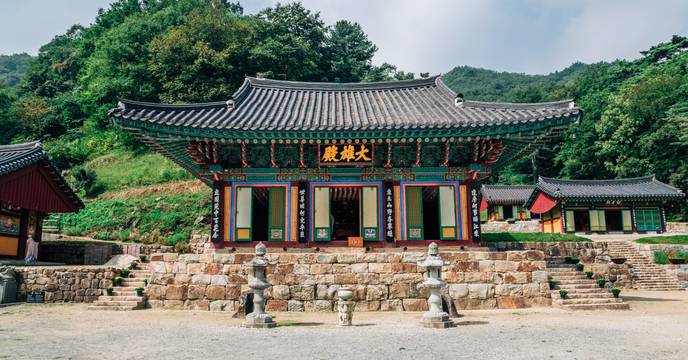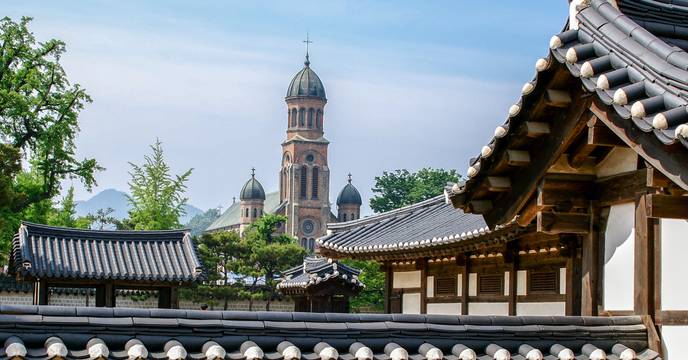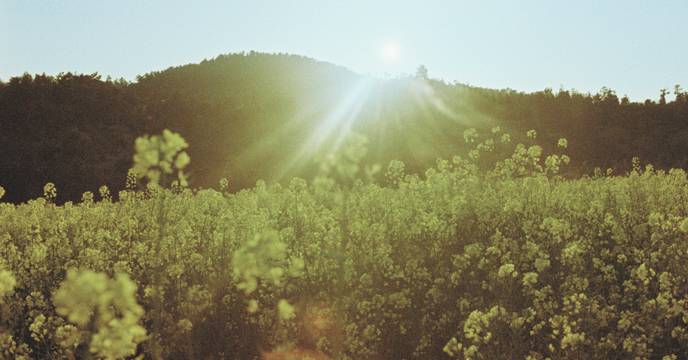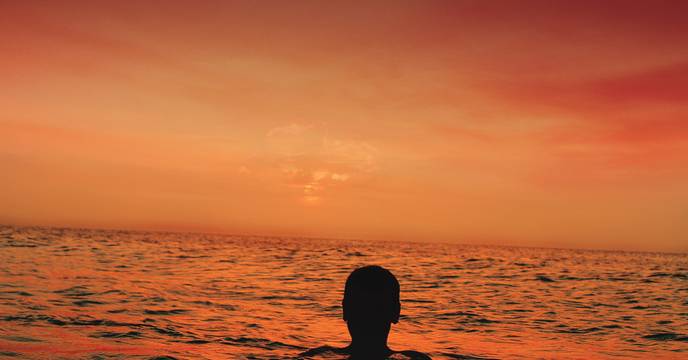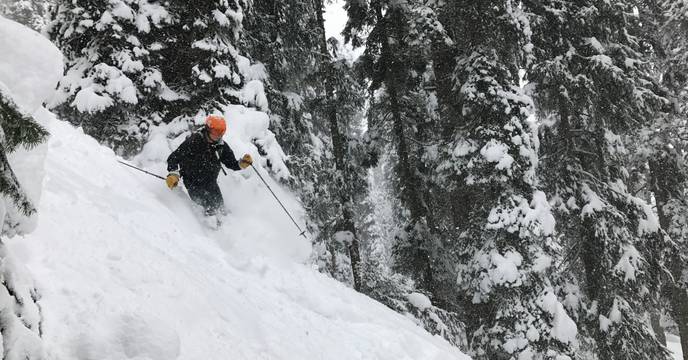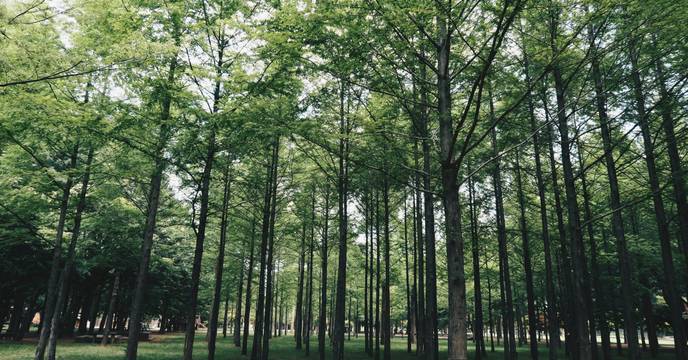
Best Time to Visit South Korea
Table of contents
Spring and Fall in South Korea
Summer and Winter in South Korea
Monthly activities and tourists
Seasonal guide to prices
Travel companies in South Korea
FAQ
South Korea is a wonderful country, with a huge variety of things to see and do in every season. From Seoul's electric springtime bloom to the crisp allure of fall in Busan, the best time to visit South Korea depends on your preferences. Embark on a cultural odyssey during mild, flower-clad springs or witness a riot of fall colors enveloping ancient palaces and modern cities alike.
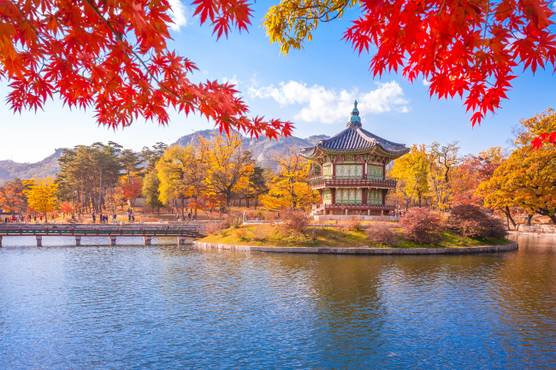
Best time to visit South Korea: Spring and Fall
Why visit during these months:
Cherry blossoms: Witness the breathtaking spectacle of cherry blossoms as they adorn cities in a romantic spring bloom.
Fall leaves: Stroll under a canvas of stunning foliage as forests and parks come alive with finery in rich golds and reds.
Festival fever: Join the exhilarating celebrations, from the Jinhae Gunhangje Festival in spring to the vivid Chuseok harvest festivities in fall.
Ideal climate: Spring and fall are both mild, and the comfortable temperatures are perfect for exploring both the cities and the countryside.
Culinary delight: Savor seasonal flavors, with street food and traditional dishes made from the freshest ingredients.
Crowd balance: Experience a pleasant balance of tourists and locals, allowing for authentic encounters and easy travel.
Top things to do and see in South Korea during spring/fall
Three essentials to pack for your South Korea trip during spring and fall
Seasonal layers
Pack light sweaters or jackets for the mild spring days and thicker layers for cool autumn evenings.
Comfortable footwear
Whether you’re navigating city streets or mountain trails, comfortable shoes are a must for the walkable landscapes.
Camera ready
You’ll want to capture every beautiful blossom and fall leaf – so make sure you don't forget a camera or smartphone with ample storage.
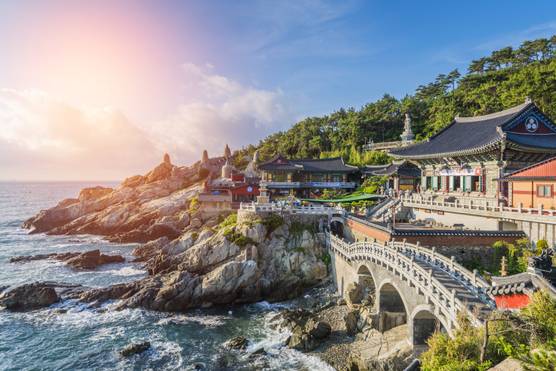
Best time to visit South Korea: Late Summer and Winter
Why visit during these months:
Summer festivals: Join the locals at summer events, from the energetic Boryeong Mud Festival to the pulsating rhythms of the Busan Sea Festival.
Winter illuminations: Cities and temples aglow with festive lights, creating a magical ambiance – don’t forget your camera!
Beach days: Spend sun-soaked days on South Korea's idyllic beaches, which are especially inviting during warm summer months.
Snow adventures: Relish the thrill of skiing and snowboarding against the backdrop of South Korea's majestic mountains.
Tranquil retreats: If you’re looking for quiet introspection, you’ll find peace in the less crowded temples and tea houses.
Seasonal cuisine: Each season offers its own culinary delicacies – taste the best of summer's fresh seafood and winter's warming dishes.
Top things to do and see in South Korea in late summer and winter
Three essentials to pack for your South Korea tour in late summer and winter
Sunscreen and hat
Protect yourself from the strong summer sun with high-SPF sunscreen and a wide-brimmed hat.
Thermal wear
In winter, bring along thermal undergarments to stay warm while exploring or participating in thrilling snowsports.
Seasonal gear
Pack according to the seasonal activities you’ll do, whether it's swimwear and a beach towel for summer or insulated gloves and a beanie for winter.
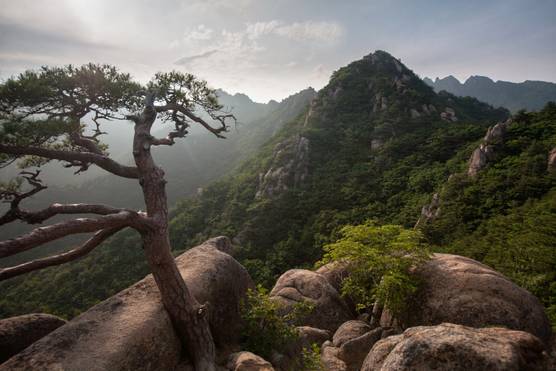
South Korea outside the peak times
Overview of activities and tourists in South Korea per month
Every month in South Korea offers something different, from the Hwacheon Sancheoneo Ice Festival in January to the Gwangalli Beach Fireworks Festival in October. Spring entices you with the Yeouido Spring Flower Festival, while the solitude of winter is perfect for spa retreats in volcanic hot springs. Whether it's the high-energy summer crowds at Busan's beaches or the modest gatherings at fall's Andong Maskdance Festival, South Korea offers something for everyone, in every season.
| Month | Popular Activities | Tourist Volume | Season |
|---|---|---|---|
| January | Ice fishing, skiing, spa retreats |
Low
| Low season |
| February | Ski festivals, Lunar New Year celebrations |
Moderate
| Shoulder season |
| March | Spring flower festivals, city sightseeing |
Moderate
| Shoulder season |
| April | Cherry blossom viewing, cultural festivals |
High
| High season |
| May | Temple stays, hiking in national parks |
High
| High season |
| June | Cultural expos, urban explorations |
Moderate
| Shoulder season |
| July | Monsoon experiences, indoor entertainment |
Low
| Low season |
| August | Beach vacations, mountain retreats |
Moderate
| Shoulder season |
| September | Chuseok family celebrations, harvest festivals |
High
| High season |
| October | Fireworks festivals, food fairs |
High
| High season |
| November | Autumn leaf viewing, hot spring soaks |
Moderate
| Shoulder season |
| December | Christmas markets, year-end concerts |
Moderate
| Shoulder season |
South Korea adventures
By region
By experience
The best time to visit South Korea: A seasonal guide to prices
South Korea is different in every season – and so too are the prices for accommodation and tours. Expect higher prices in the cherry-blossom-filled high season of spring and the crisp, leaf-strewn days of fall in line with tourist demand. Come the hushed low season during the summer monsoons and deep winter chill, the prices are lower as the crowds of tourists thin out. Shoulder seasons offer the perfect balance, with more moderate prices.
High season (March to May and September to November):
Peak prices: In the high season you can expect higher rates for flights and hotels during these months.
Glorious weather: Spring and fall offer the most temperate climate, perfect for exploring without extreme weather conditions.
Ideal for everyone: Perfect for travelers seeking the quintessential South Korean experience, from culture enthusiasts to nature lovers.
Low season (July to August and December to February):
Reduced costs: The low season offers the most competitive prices on travel essentials.
Extreme weather: Brace yourself for hot, rainy summers and cold, snowy winters.
Best for adventurers: Those who defy the off-peak norms for quieter explorations or winter sport aficionados relish these months.
Shoulder season (June, early March, late November):
Moderate prices: These times offer a great balance between cost and accessibility.
Transitioning climate: Variable weather conditions can surprise you – so make sure to pack plenty of layers.
Fit for flexible travelers: Suited to visitors who can navigate the unexpected and enjoy the lull before and after the peak times.
Top-rated operators for South Korea tours
What people ask about South Korea
When is the peak travel season in South Korea?
Peak travel season in South Korea spans from March to May and again from September to November. During both of these times, the weather is at its most mild and you can experience the landscapes in their full splendor.
How do prices vary throughout the seasons in South Korea?
Prices are highest during the peak spring and fall months, while you can find discounts during the summer and winter low seasons. Shoulder seasons offer a balance of cost and experience.
Can I visit South Korea outside of the peak seasons?
Absolutely! Visiting South Korea outside of peak seasons can offer unique experiences like summer monsoon hikes and winter ski adventures. You can often get good deals during this time too, with lower costs and with fewer crowds.
What is the best season for cherry blossom viewing in South Korea?
The enchanting cherry blossoms typically reach full bloom in April, making early spring the best time to visit South Korea for this magical floral display.
When can I enjoy South Korea's beaches?
South Korea's beaches are best enjoyed in the warmer months, especially from June to August when the weather is hot enough for swimming and beach activities.
What are the benefits of visiting South Korea during the shoulder season?
Shoulder season travel offers the perks of milder crowds and relatively good weather. That means visiting during the shoulder seasons is a smart choice for those looking for a more relaxed travel pace and better deals.
24/7 Customer Support
Our team of experienced tour specialists have traveled to hundreds of countries around the globe and have decades of first-hand travel experience to share. Contact us now to have all of your tour-related questions answered!
More about South Korea
- Far East (6640)
- September 2025 (107)
- October 2025 (107)
- Fully Guided (103)
- April 2025 (101)
- May 2025 (99)
- Seoul (99)
- June 2025 (97)
- November 2025 (89)
- Family (85)
- March 2025 (61)
- December 2025 (61)
- 10 Day (43)
- Christmas & New Year (40)
- February 2026 (35)
- January 2026 (31)
- 2 Week (29)
- 7 Day (28)
- Private (17)
- Temples (10)
- 3 Week (9)
